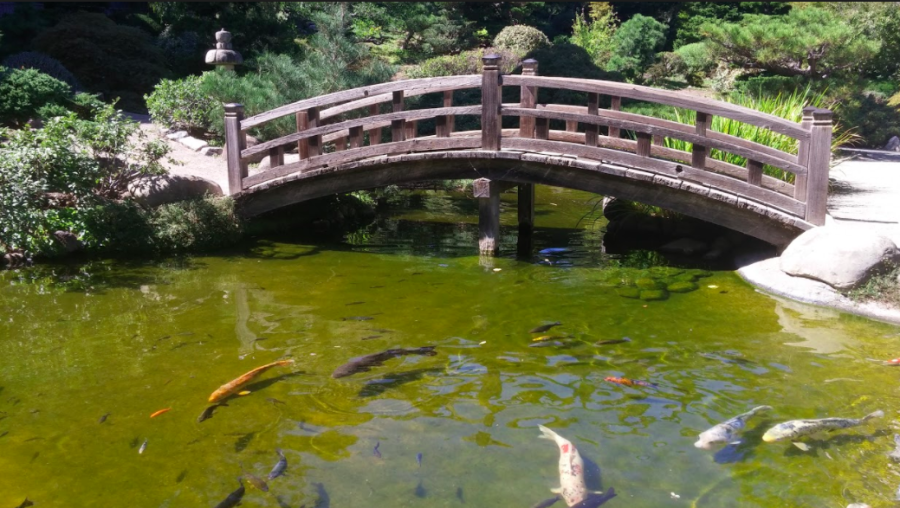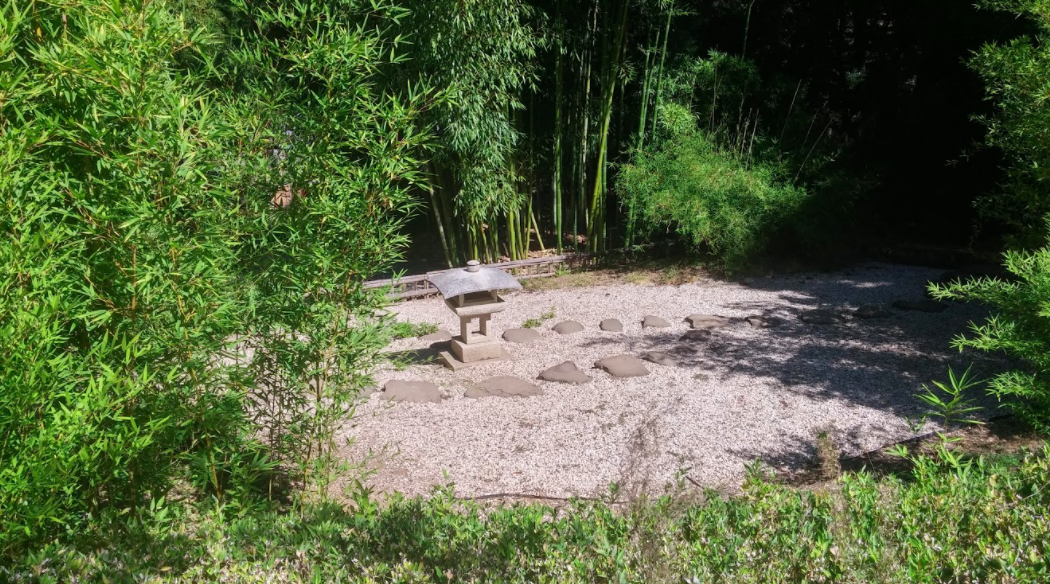Hakone Gardens Renovations Ahead of Upcoming Groundbreaking Event
October 6, 2017
Hakone Gardens in Saratoga hosted a groundbreaking event on Sept. 28 to celebrate the completion of the first of a series of renovations to the historic Japanese-style botanical garden. These new renovations to the koi ponds, including a new filtration system and a redistribution of pipes, as well as a deeper pond, are a part of the first phase in a four-phase master plan to preserve Hakone’s facilities. The joint venture between the Hakone Foundation and the City of Saratoga was made possible with $250,000 from Saratoga’s capital projects budget of $28 million.
Hakone has had history in Saratoga going back for over 100 years. The creators, Isabel and Oliver Stine, first became enamored with Japanese gardens at the 1915 Panama-Pacific International Exposition in San Francisco. Seeking more of the same, they traveled to Japan to, visiting Fuji-Hakone-Izu National Park, one of the nation’s first four national parks. Upon returning home to the US in 1917, they commissioned a Japanese garden in the same style as the ones they had seen in Japan. The gardens remained a private property in 1961, when it was purchased by a partnership of six couples, and later sold to the City of Saratoga, at which time it became public property.
Hakone Gardens currently features multiple gardens, including the Hill and Pond Garden, Tea Garden, Zen Garden and Bamboo Gardens. It also includes specialized buildings such as tea ceremony rooms, the Moon Viewing House and the Cultural Exchange center, an authentic reproduction of a 19th century Kyoto tea merchant’s house and shop.
Lynbrook students are among the many who have visited Hakone Gardens over the years, and have had their own unique experiences with the Gardens.
“I like how it’s kind of hidden,” said senior Sasha Williams. “It’s unexpectedly quiet and peaceful.”
Many people enjoy Hakone Gardens as a place of rest and reflection.
“It just gave me some perspective,” said senior Michael Gloner. “Looking at anything from further away gives you a different perspective. Your world is so limited; my life has been so limited in that sense. You move within a very finite distance, and from further away, you can see that it’s kind of back and forth and back and forth, and it’s all within this little valley.”
Preliminary plans for Hakone Gardens renovations were revealed to Saratoga residents in April 2015. Among the outlined plans were goals to increase community interaction through establishing closer connections with Saratoga businesses and public schools as well as to restore Hakone’s historic buildings and structures such as the pavilions, the Moon Viewing House and the koi ponds. Another central goal was the expansion of Hakone’s educational opportunities, to include more public festivals and outreach programs.
An updated master plan was unanimously approved by the Saratoga City Council in May 2016 after revisions were made by consulting Saratoga residents at workshop events. The approved first phase concerns koi pond renovations, as well as the surrounding hill and pond gardens. The second phase retouches the Zen Garden House, Moon Viewing Center and Cultural Exchange Center and the third and fourth phases address the location of the entrance and pathways leading from the parking lot.
“The pond is not deep enough; we need to deepen some areas so that the fish, especially on hot days, have someplace cooler to go, so they can go deeper into the pond,” said Shozo Kagoshima, executive director of the Hakone Foundation. “The second thing is that the existing filtration system is about 20 years old, so it needs to be replaced as well. That’s probably the most important thing, that’s why it’s the first part of this first phase.”
On Sept. 28, the celebration to commemorate the completion of the first phase of the plan was held at Hakone Gardens. At the event, Saratoga mayor Emily Lo and senior members of the Hakone foundation addressed a small crowd as to the progress of the upgrading process, as well as laid out a roadmap of future changes.
“The third phase will be the construction of the ticketing booth, gift shop, tea house, a new garden center for our garden and maintenance department, and then the fourth phase will be the renovation and grading of the parking lot for accessibility,” said Kagoshima.
While the first phase of this renovation project has been completed, there is still much progress to be made. For now, however, guests continue to enjoy the calming atmosphere of the gardens.
“Being able to come and sit, it’s just so tranquil,” said Kagoshima. “You can sit here in this pavilion, hear the waterfall in the background, and in the morning you can hear the birds chirping. Just sitting here and looking at the gardens, it’s really something you can sit down and relax with.”




































































